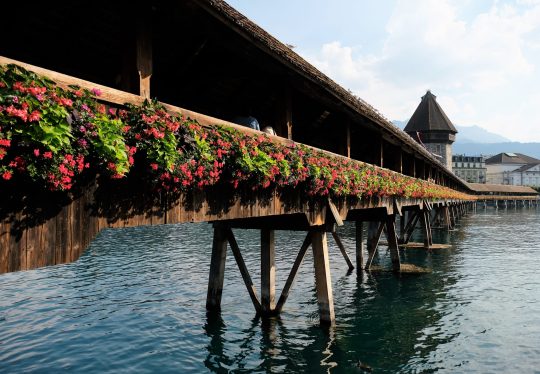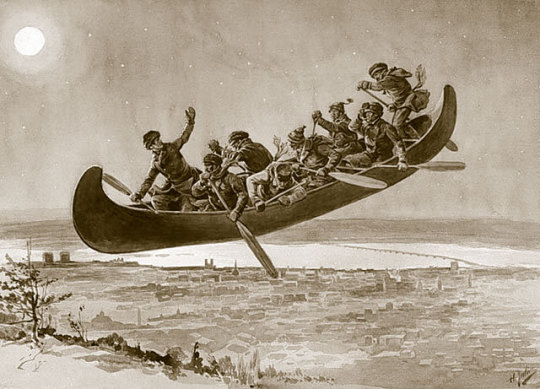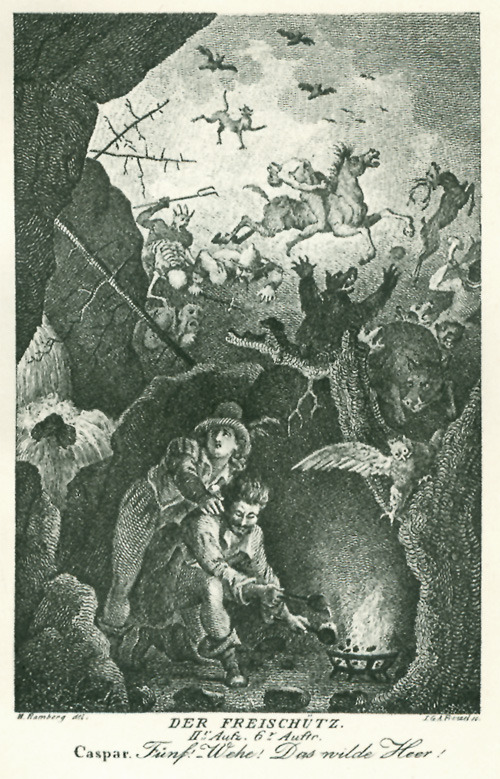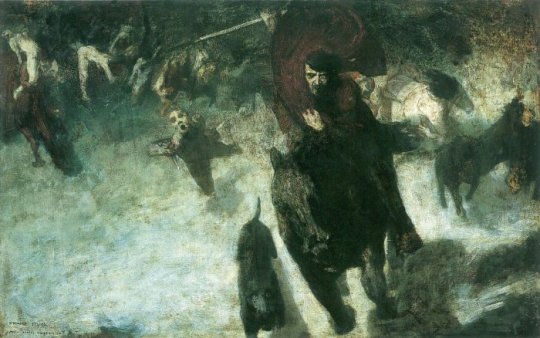#alemanne
Explore tagged Tumblr posts
Text

Nine, neun, negen
There are two types of words for 9 in the Germanic languages. Type 1 is g-less: there's German neun, Swedish nio, and Icelandic níu among others. Type 2 does have a g, as in Dutch negen, West Frisian njoggen, and Low Saxon negene. You'd think that English nine is type 1, but it used to have a g too: in Old English, it was nigon. It lost its g in Middle English. So did neun, nio and níu lost their g too? No, they've never had one. The g only evolved in the north-western branch of West Germanic. Words from other Indo-European branches, such as Latin novem, lack a g too. My new graphic tells you all about it.
#historical linguistics#linguistics#language#etymology#english#dutch#german#low saxon#frisian#scots#afrikaans#limburgish#alemannic#bavarian#yiddish#gothic#faroese#norwegian#swedish#icelandic#danish#elfdalian#lingblr
54 notes
·
View notes
Text
Der lange Mann — The Long Man
The Long Man is a figure of the Fasnet of Rottweil, the local form of carnival, which has been celebrated for centuries. A characteristic feature of the Rottweil Fasnet is that the participants of the parade wear more or less scary masks and costumes. In Rottweil, the Guild of the Fools only allows certain characters, and the Long Man is one of them.

The Long Man parades the streets of Rottweil on Shrove Monday with a band to wake up the townsfolk.
37 notes
·
View notes
Text




Blind Spot (1981)
138 notes
·
View notes
Text

Claudia von Alemann with her daughter Noemi on the set of Die Reise nach Lyon in 1979. Photograph by Andreas Schneuwly
0 notes
Text
youtube
die reise nach lyon, claudia von alemann 1981
#die reise nach lyon#claudia von alemann#1981#antonieta#marseille#ich bin den sommer über in berlin geblieben
1 note
·
View note
Text
As an aside, a couple of houses are being torn down around me, and if watching an excavator crew of two, one operator and one on the ground (and I dare you to not find this endearing, like watching a dinosaur and his human, the dinosaur even has a mouth) seperate the materials out into piles of either wood, plastics, or metal, does not fill you with patriotic joy as a German, then by Kohl, nothing ever will!
It is so amazing, I consider closing the studio for today and just watch.
1 note
·
View note
Text
#Claudia von Alemann#Ula Stöckl#Helke Sander#Helga Reidemeister#Mubi#Claudia Lenssen#Feminist cinema
0 notes
Text

Geschichte
Die Geschichte ist ein Geschichte. Elisabeth fährt nach Lyon, um eine Geschichte über Flora Tristan, also über die weltberühmte Flora Célestine Thérèse Henriette Tristan Moscoso zu schreiben. Unberühmte Menschen nennen Flora die Großmutter Paul Gauguins. Berühmte Menschen nennen ihn den Enkel Floras. Elisabeth ist Historikerin und gerät an Geräusche, Schritte, Treppen und eine alte Stadt. Claudia von Alemann hat 1981 einen der Filme gedreht, bei denen man eigentlich nur zuschauen muss.
1 note
·
View note
Text
Switzerland Day 2 – Lucerne / Luzern
Lucerne, or as the Swiss spell it, Luzern was day 2 in Switzerland. Taking the train directly from Zug it only takes 19 minutes, the long train 30 minutes. What a quintessential pretty Swiss city-centre. Like many cities in Switzerland, Lucerne is built around water. Here, the Reuss river takes centre stage. Cutting the city in two, the crisp clear blue water bringing nature and life into the…

View On WordPress
#Alemannic#Battle of Sempach#Chaff Bridge#Chapel Bridge#Chapel Bridge paintings#Emperor Sigismund#Glacier Garden#Jesuit church#Kapellbrücke#Kapellbrücke paintings#King Rudolph 1 von Habsburg#Lion Monument#Lion of Lucerne#Lucerne#Luzern#Musegg Wall#Rathaussteg bridge#Reuss#Spreuer Bridge#Spreuervbrücke#Swiss#Switzerland
1 note
·
View note
Note
what is your native language?
swiss german (alemannic) and swiss high german
swiss german to german is basically like scots to english where it's somewhere on the line between a dialect and a distinct language depending on who you ask, but language learning wise these are acquired separately. it is kind of funny though how the german part of switzerland has this whole collection of alemannic dialects but then since we also need high german for writing (swiss german is (up to now) only a spoken language) and being able to talk to germans and austrians we also have our own dialect of THAT version of german with it's own differences to germany and austria.
600 notes
·
View notes
Photo
This is about Flora Tristan, one of the women who wasn't in the history books I had at school but really should have been.





Die Reise nach Lyon (Claudia von Alemann, 1981)
2K notes
·
View notes
Text
Joseph Daul

Physique: Husky Build
Height: 5' 5"
Joseph Alexander Daul (born 13 April 1947) is a French politician who served as President of the European People's Party (EPP) from 2013 to 2019. He previously served as Leader of the EPP Group in the European Parliament from 2007 to 2014 and a Member of the European Parliament (MEP) from France from 1999 until 2014. He is a member of The Republicans, part of the EPP.





Daul had previously come to prominence as the chairman of the European Parliament's powerful Committee on Agriculture, a position he was elected to on 23 July 2004, and previously, from 2002, as chairman of the Conference of Committee Chairmen. He has been mayor of Pfettisheim (Bas-Rhin) since 1989, and is an officer of the Agricultural Order of Merit, knight of the National Order of Merit and knight of the Legion of Honour.



Short and cute, I'd vote for him (if I wasn't American) purely on looks. I did see something about being under investigation for misuse of public funds in France, but unless that is somehow going to result in him doing nude photo-shoots and porno's on Older4Me then I don't have much of an opinion. He's a politician… of course he's corrupt.





Anyway, Daul manage his family cattle farm of 75 ha with his wife and, for the last few years, his son, specializing in beef production and the cultivation of sugar beet. In addition to French, he speaks standard German and Alsatian, the Alemannic variety of German spoken in his native Alsace. I can offer nothing else about him, other than I want to fuck him. But you've probably guess that already.

75 notes
·
View notes
Text
it is Fasnet/Fasnacht time in Germany, which is the traditional alemannic carnival. there was a post on my dash mentioning 'the Fool's guild', which regulates the carnival characters. Jester bureaucracy? yes, baby! Ordnung muss sein. so, I HAD to look it up.
well, there indeed exist local Jester Guilds (Narrenzünfte), some of which are part of a sort of a jester union type organisation, VSAN (Vereinigung Schwäbisch-Alemannischer Narrenzünfte). it's a big deal, not every guild is accepted into VSAN. to be eligible, the jester guild must show a commitment to preserving cultural heritage, and not randomly invent Fasnet characters and/or modify their costume.
the VSAN wikipedia page has a full member list by town/village with the correct Narrenrufe: jester calls that you should shout back at them (like Narri! Narro!)
I also found scalding tea about a guild that got expelled, because they introduced some kind of witch costume, which I think did not have a historical prototype?
the guilds have Präsidenten and Zunftmeister and meet up regularly to discuss urgent jester matters, hold lectures, and check and approve costumes. (the Rottweil Narrenzunft president signs his announcements with 'Mit närrischen Grüßen')
anyone can become a guild member by filling in an official form and paying a yearly membership fee. members take part in the carneval itself (in full jester gear!), as well as jester meet-ups, and might have part-time volunteer duties, such as costume repairs. if you successfully climb jester career ladder and reach Narrenratsmitglied status, your photo in a delightful traditional hat will be featured on your local jester guild website.
Oberndorf jester guild also awards pretty enamel medals to committed jesters who took part in 10, 25 or 40 Narrensprünge.
okay, however endearingly German/Swabian this whole establishment is, it seems to have serious historical reasons other than a natural German penchant for tradition/bureaucracy. VSAN was originally formed as a form of political pushback against jester and Fastnacht bans and a collective attempt to save jester/carnival culture. cool!
I really recommend looking up local Narrenzunft websites and perusing the character galleries.
Entschuldigung, wenn ich was falsch verstanden habe! Ich weiß ziemlich wenig über die Fasnet, und außerdem ist Deutsch nicht meine Muttersprache. Also korriegiert mich bitte, falls etwas nicht stimmt! Danke




46 notes
·
View notes
Text

Claudia von Alemann on the set of Die Reise nach Lyon in 1978
0 notes
Text
Frau Gauden
In the German region of the Prignitz, Frau Gauden (Mrs. Gauden) is the leader of the Wild Hunt. She leads this army of supernatural hunters together with her 24 dog-shaped daughters.

The Wild Hunt, also known as the Wild Army or the Wild Ride, is the German name for a folk tale widespread in many parts of Europe, particularly in the north, which usually refers to a group of supernatural hunters who hunt across the sky. The sighting of the Wild Hunt has different consequences depending on the region. On the one hand, it is considered a harbinger of disasters such as wars, droughts or illnesses, but it may also refer to the death of anyone who witnesses it. There are also versions in which witnesses become part of the hunt or the souls of sleeping people are dragged along to take part in the hunt. The term “Wild Hunt” was coined based on Jacob Grimm’s German Mythology (1835).

The phenomenon, which has significantly different regional manifestations, is known in Scandinavia as Odensjakt (“Odin's Hunt”), Oskorei, Aaskereia or Åsgårdsrei (“the Asgardian Train”, “Journey to Asgard”) and is closely linked to the Yule season here. The reference to Wotin/Odin in the name Wüetisheer (with numerous variations) is also clear in the Alemannic and Swabian dialects; In the Alps, people also speak of the Ridge Train. In England the train is called the Wild Hunt, in France it is called Mesnie Hellequin, Fantastic Hunt, Hunt in the Air, or Wild Hunt. Even in the French-speaking part of Canada, the Wild Hunt is known under the term Chasse-galerie. In Italian, the phenomenon is referred to as caccia selvaggia or caccia morta.

The Wild Army or the Wild Hunt takes to the skies particularly in the period between Christmas and Epiphany (the Rough Nights), but Carnival, Corporal Lent and even Good Friday also appear as dates.
Christian dates have superseded the pagan dates, which see the Wild Hunt moving, especially during the Rough Nights. This period of time is assumed to be originally between the winter solstice, i.e. December 21st and, twelve nights later, January 2nd. In European customs, however, since Roman antiquity, people have usually counted from December 25th (Christmas) to January 6th (High New Year).

The ghostly procession races through the air with a terrible clatter of screams, hoots, howls, wails, groans and moans. But sometimes a lovely music can be heard, which is usually taken as a good omen; otherwise the Wild Hunt announces bad times.
Men, women and children take part in the procession, mostly those who have met a premature, violent or unfortunate death. The train consists of the souls of people who died “before their time”, that is, caused by circumstances that occurred before natural death in old age. Legend has it that people who look at the train are pulled along and then have to move along for years until they are freed. Animals, especially horses and dogs, also come along.

In general, the Wild Hunt is not hostile to humans, but it is advisable to prostrate yourself or lock yourself in the house and pray. Whoever provokes or mocks the army will inevitably suffer harm, and whoever deliberately looks out of the window, gaping at the army will have his head swell so much that he cannot pull it back into the house.

The first written records of the Wild Hunt come from early medieval times, when pagan traditions were still alive. In 1091, a Normannic priest named Gauchelin wrote about the phenomenon, describing a giant man with a club leading warriors, priests, women and dwarfs, among them deseased acquaintances. Later references appear throughout the High and Late Middle Ages.
152 notes
·
View notes
Text
Lädine
A Lädine is a vessel that was used throughout Europe's inland waters, but its main use was on Lake Constance. Incidentally, its little sister was called a Segmer. These vessels were used to transport all kinds of goods from the 14th - 20th century. The word "Lädine" contains the Alemannic "Lädi" (cargo, load), while "Segmer" is the ancient Greek/Roman technical term for the load of pack animals, which was reloaded onto these ships in the eastern part of Lake Constance after crossing the Bernhardino Pass.
A Lädine had a flat bottom, a square sail, oars and a wide leeward. The construction of both types was standardised, but the dimensions differed in the five countries bordering Lake Constance. The carrying capacity of a Lädine was up to 150 tonnes with a mast height of 24 metres, a length of 32 metres and a width of 4 metres. The draught was 1.17 metres to 1.46 metres, the leeboard 35 centimetres to 42 centimetres. The four types of Segmer had a load capacity of between 7 tonnes and 75 tonnes and were up to 20 metres long.

Replica Lädine St Jodok with the coat of arms of Immenstaad on the square sail.
Due to this design and their utilisation, they were no manoeuvre wonder. When the wind was calm, you either had to row, tow or punt on the shore to get to your destination. A headwind meant waiting in the harbour, as it was not possible to cross without a keel. Historical sources often contain complaints about violations of Christian Sunday rest, as people preferred to make use of the available wind rather than rowing or piling up for a long and arduous journey.
Unfortunately, they lost their significance in the course of the 19th century with the advent of steamers and the railway and slowly disappeared from service in the 20th century.
Dietmar Bönke: Schaufelrad und Flügelrad. Die Schiffahrt der Eisenbahn auf dem Bodensee. München 2013
83 notes
·
View notes